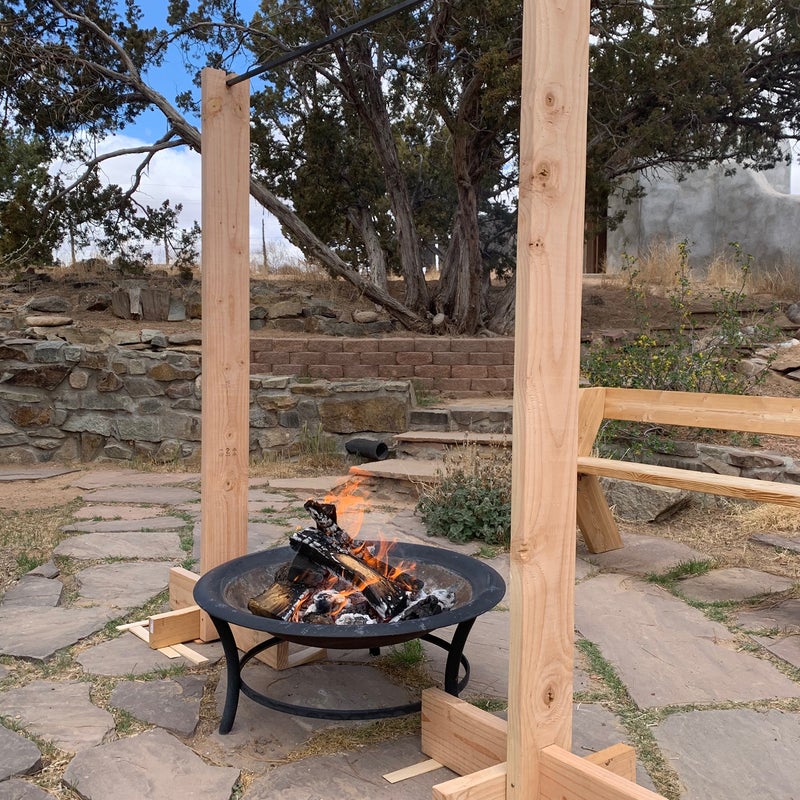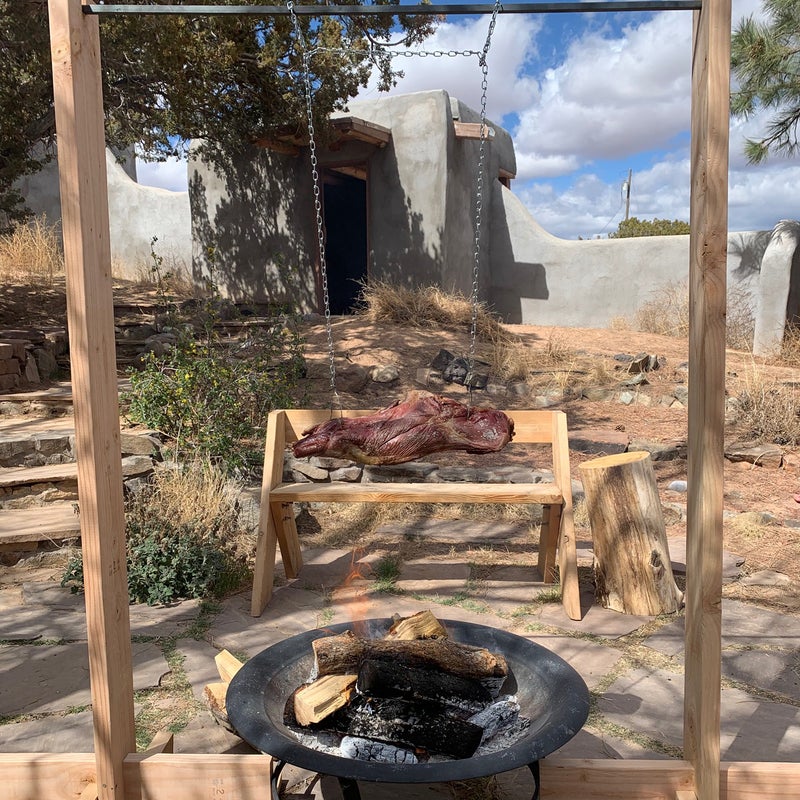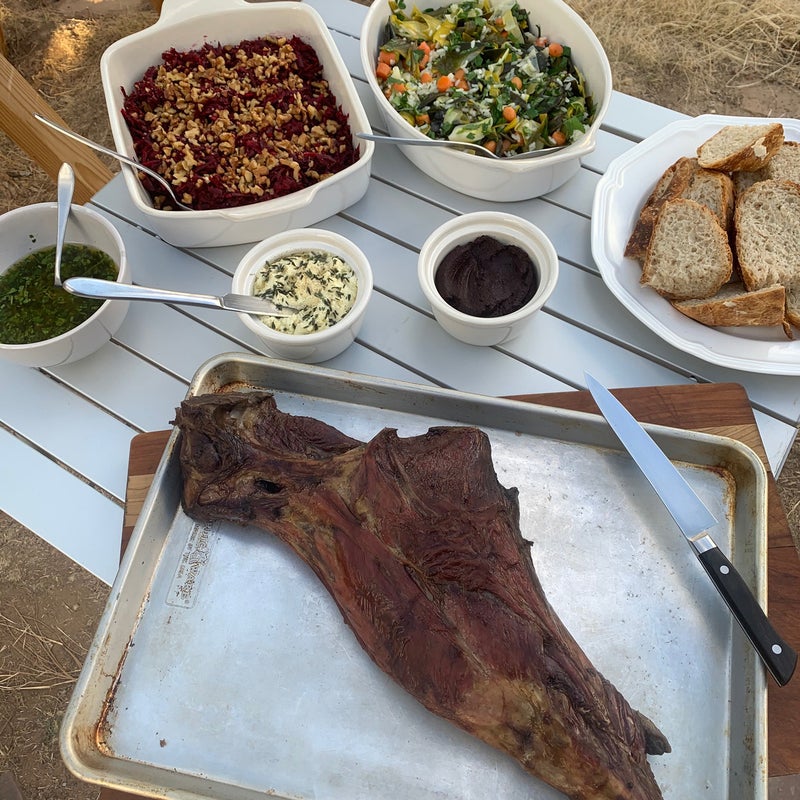Before bagged charcoal or propane grills, big joints of meat were cooked outside with more elemental materials: burning logs, ashes and coals, hot stones. If you can procure a few easy-to-find hardware-store items, it’s surprisingly simple to re-create a “barbecue” from millennia past. For whole shoulders, whole legs, rib racks, and more, here’s a low-tech, approachable option for primitive cooking in your backyard.
Let It Hang
Cooking meat above an open fire is as old as dirt itself. You can rest the joint on a rack above flames, or skewer it with a rod or two and create a kind of rotisserie. But I prefer to suspend whatever I’m cooking with wire: every time you put on new logs, the fire will grow, so instead of keeping tighter control over the flames, it’s easier to be able to simply move the meat up or down if necessary. My favorite thing to cook using this method is a leg of lamb, but it’s fantastic for ribs and whole chickens, too.

First create a frame over the fire source. I have a metal fire pit, but you can just as easily cook over a fire ring made of stones—whatever is going to be safe for your area. When I initially started using this method, I picked up three eight-foot lengths of one-by-two boards, tied them together at one end, and splayed the other ends out into a makeshift tripod. (You could also use three lengths of rebar for this. Even two columns of stacked cinder blocks, with something bridging them up top, will suffice.) Later, as an upgrade, I built a basic structure out of two nine-foot lengths of two-by-sixes. It’s about five and a half feet high, with scrap pieces attached at the bottom, parallel and perpendicular, for feet. I cut a notch into both boards at the top for a , which you can find at most hardware stores as stock welding steel.

Loop two small lengths of chain onto the rod—shortening them from a longer piece by undoing link connections with pliers, if need be—and then secure two generous lengths of wire on both sides of your meat and attach them to the chain. (Galvanized , so long as there’s no prolonged contact with acidity, but it’s better to use stainless steel here and save any worry.) Connect the wire to the chain by twisting a few revolutions into the end, which makes it easy to undo and move your meat up or down. Pierce two holes, one at the skinny end of the lamb leg and another up top, both near the bone, for the wire to loop through. After trimming off any silverskin and sinew, and applying a generous hand with salt, it’s ready to hang. (Any marinade would work great with this application, too.)

The fire underneath the lamb should be kept relatively small—the point is to cook this slow. It’s difficult to say how high to hang the meat, because it’s going to change every time, depending on the temperature outside, the wind, and even the kind of wood you’re burning. (Any typical firewood—pine, oak, etc.—will do fine, as will hickory or fruit-tree woods.) Somewhere around 18 inches above the flames is a good bet, though the main barometer is being able to hold your hand comfortably under the meat for at least 20 seconds. Every half-hour or so, slide the wire loops around each end of the leg so that you can flip the meat, making sure that each surface gets an even amount of direct heat.

Here’s a five-and-a-half-pound leg of lamb that I cooked recently with this method. It took about four and a half hours, resulting in a medium-well cook on the outside, medium closer to the bone. (Lamb leg is better cooked past medium. Save medium-rare for your rib eyes.) If you’re after something more quantitative, use a thermometer to test a spot near the bone at the leg’s thickest part. Once you read about 135 degrees, you’re set—as the lamb rests for about 20 minutes, its temperature will continue to climb. Keep in mind, too, that a whole leg is a collection of different muscles, so if you’re expecting the same doneness and texture throughout, don’t: there will be a variety, which is what’s great about it.
Because this is a dry environment in which to cook meat, the outside rim of the lamb leg will likely take on the feel of very soft jerky, creating a wonderful textural contrast. That said, I baste the leg throughout cooking every 20 to 30 minutes with a brine of water, salt, woody herbs, and garlic, to give it some moisture.


